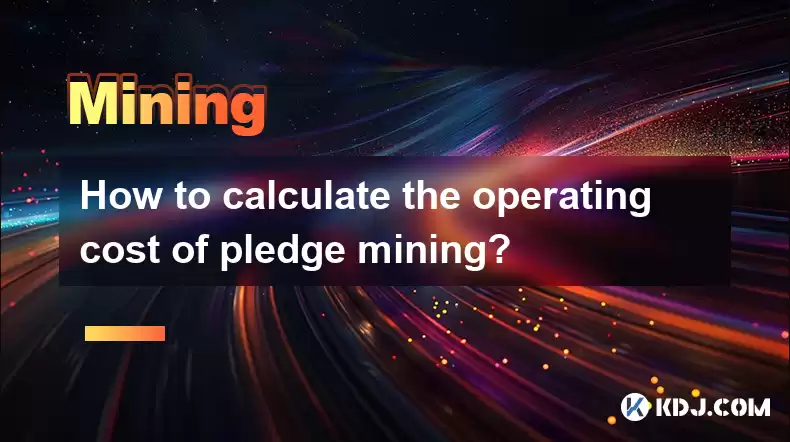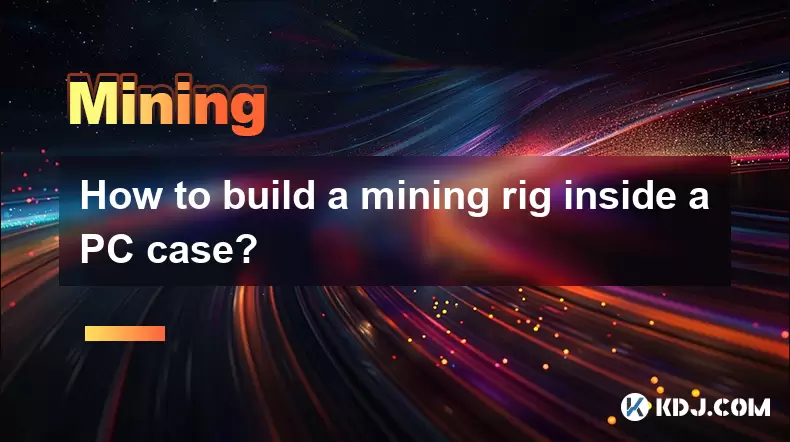-
 Bitcoin
Bitcoin $117500
2.15% -
 Ethereum
Ethereum $3911
6.19% -
 XRP
XRP $3.316
10.79% -
 Tether USDt
Tether USDt $1.000
0.01% -
 BNB
BNB $787.2
2.24% -
 Solana
Solana $175.2
4.15% -
 USDC
USDC $0.9999
0.00% -
 Dogecoin
Dogecoin $0.2225
8.40% -
 TRON
TRON $0.3383
0.28% -
 Cardano
Cardano $0.7868
6.02% -
 Stellar
Stellar $0.4382
9.34% -
 Hyperliquid
Hyperliquid $40.92
7.56% -
 Sui
Sui $3.764
7.63% -
 Chainlink
Chainlink $18.48
10.66% -
 Bitcoin Cash
Bitcoin Cash $582.1
1.88% -
 Hedera
Hedera $0.2601
6.30% -
 Avalanche
Avalanche $23.33
4.94% -
 Ethena USDe
Ethena USDe $1.001
0.02% -
 Litecoin
Litecoin $122.3
2.04% -
 UNUS SED LEO
UNUS SED LEO $8.969
-0.27% -
 Toncoin
Toncoin $3.339
0.86% -
 Shiba Inu
Shiba Inu $0.00001287
4.30% -
 Uniswap
Uniswap $10.43
7.38% -
 Polkadot
Polkadot $3.861
5.08% -
 Dai
Dai $1.000
0.02% -
 Bitget Token
Bitget Token $4.513
3.41% -
 Monero
Monero $267.7
-6.18% -
 Cronos
Cronos $0.1499
4.14% -
 Pepe
Pepe $0.00001110
5.15% -
 Aave
Aave $284.9
8.28%
How to calculate the operating cost of pledge mining?
Staking cryptocurrency involves costs beyond the initial investment; consider hardware, electricity, opportunity costs, and ongoing maintenance for accurate profitability assessment.
Mar 14, 2025 at 09:51 pm

Key Points:
- Understanding the components of staking costs: This includes initial investment, hardware/software costs, electricity consumption, and opportunity costs.
- Calculating initial investment: Determining the cost of acquiring the cryptocurrency to stake.
- Estimating hardware and software expenses: This depends on the type of staking and whether you are running a validator node.
- Quantifying electricity costs: Calculating the energy consumption of your hardware and the associated electricity price.
- Assessing opportunity costs: Considering the potential returns from alternative investments.
- Tracking and analyzing ongoing costs: Regularly monitoring and adjusting your cost calculations.
How to Calculate the Operating Cost of Stake Mining?
Stake mining, or simply staking, differs significantly from proof-of-work mining. It doesn't require energy-intensive hardware like ASICs. However, it still involves various costs that need careful calculation to determine profitability. Let's break down the key cost components.
1. Initial Investment:
This is the cost of acquiring the cryptocurrency you intend to stake. The price fluctuates, so the initial investment will vary depending on the market conditions at the time of purchase. Factor in any transaction fees incurred during the purchase process, whether it's from an exchange or peer-to-peer transaction. Remember this is your principal investment and needs to be considered when assessing overall profitability.
2. Hardware and Software Costs:
The hardware requirements for staking vary greatly depending on the cryptocurrency and the method used. Some cryptocurrencies allow staking directly through exchanges or wallets, requiring minimal to no additional hardware. Others require running a validator node, demanding more powerful hardware, potentially including a dedicated server, storage, and cooling systems. Software costs could include specialized wallets or node software licenses. If using cloud services, those expenses must be included as well.
3. Electricity Consumption:
If you're running a validator node, electricity consumption becomes a significant cost factor. The power draw of your hardware directly impacts your energy bill. You need to accurately measure the power consumption of all your staking-related equipment. Then, multiply that by your local electricity price to determine your ongoing electricity costs. Consider energy efficiency when choosing hardware.
4. Opportunity Costs:
Opportunity cost represents the potential return you could have earned by investing your capital elsewhere. If you'd invested your money in a different asset, like bonds or stocks, you would have earned a certain return. This forgone return needs to be factored into your cost calculation. It’s crucial to compare your staking returns against the potential returns from alternative investments with similar risk profiles.
5. Network Fees and Transaction Costs:
While less prominent than in proof-of-work, network fees exist in many staking networks. These fees are incurred when you send or receive your staked cryptocurrency. The amount can vary significantly based on network congestion. Regularly check the network's fee structure to incorporate it into your cost analysis.
6. Tracking and Analyzing Ongoing Costs:
Regularly monitor your electricity consumption, network fees, and any other recurring costs. Track your staking rewards to assess the profitability of your operation. Utilize spreadsheets or specialized software to help with this process. This allows you to adjust your strategy if costs become unsustainable or if rewards fall below expectations.
7. Depreciation:
Hardware used for staking, especially for running validator nodes, will depreciate over time. This depreciation needs to be accounted for in your cost calculation. You might want to consider using a depreciation model to estimate the annual loss in value of your equipment.
8. Maintenance and Upgrades:
Software updates and potential hardware replacements or upgrades will incur costs. Factor in potential maintenance fees and the cost of future upgrades to keep your setup running efficiently and securely.
9. Security Costs:
Protecting your staked cryptocurrency from theft is paramount. Consider the cost of security measures, such as robust firewalls, anti-malware software, and potentially specialized security services. The cost of compromise is far higher than preventative measures.
10. Time Investment:
Running a validator node, especially in a complex network, requires time and expertise. Consider the value of your time spent managing and monitoring the staking process. While this isn't a direct monetary cost, it's an opportunity cost that needs to be factored into your overall assessment.
Frequently Asked Questions:
Q: What is the difference between staking and mining?
A: Staking involves locking up your cryptocurrency to validate transactions and secure the network, earning rewards in return. Mining typically requires specialized hardware to solve complex computational problems, consuming significant energy.
Q: Are there any tax implications for staking rewards?
A: Yes, staking rewards are usually considered taxable income in most jurisdictions. Consult a tax professional for specific guidance in your region.
Q: How can I accurately estimate my electricity costs for staking?
A: Use a power meter to measure the wattage consumption of your hardware. Multiply the wattage by the number of hours it runs daily, then multiply by your electricity price per kilowatt-hour.
Q: What are the risks associated with staking?
A: Risks include the potential for slashing penalties (loss of staked funds due to misbehavior), cryptocurrency price volatility impacting the value of your staked assets, and the risk of technical issues or security breaches.
Q: How do I choose which cryptocurrency to stake?
A: Consider factors like the potential staking rewards, the network's security, the technical requirements for staking, and the overall market outlook for the cryptocurrency.
Disclaimer:info@kdj.com
The information provided is not trading advice. kdj.com does not assume any responsibility for any investments made based on the information provided in this article. Cryptocurrencies are highly volatile and it is highly recommended that you invest with caution after thorough research!
If you believe that the content used on this website infringes your copyright, please contact us immediately (info@kdj.com) and we will delete it promptly.
- Tron's Sell-Off Spurs Altcoin Shift: What's Next for TRX?
- 2025-08-08 08:30:12
- RUVI Presale: Is the Growth Potential Real?
- 2025-08-08 09:10:12
- Sleep Token's US Takeover: Thornhill Rides the 'Even In Arcadia' Wave
- 2025-08-08 08:30:12
- FTT Token's Wild Ride: Creditor Repayments vs. Market Drop - A New Yorker's Take
- 2025-08-08 07:10:12
- Floki Crypto Price Prediction: Riding the Robinhood Rocket or Just a Meme?
- 2025-08-08 07:15:12
- EigenLayer, Restaking, and Ethereum: Navigating the Hype and the Hazards
- 2025-08-08 06:30:12
Related knowledge

What is "proof-of-work" and how does it relate to mining?
Aug 07,2025 at 02:03pm
Understanding the Concept of Proof-of-WorkProof-of-work (PoW) is a consensus mechanism used in blockchain networks to validate transactions and secure...

What are the differences between mining on Windows vs. Linux?
Aug 06,2025 at 11:29pm
Overview of Cryptocurrency Mining PlatformsCryptocurrency mining involves using computational power to solve complex cryptographic puzzles and validat...

How to use an old computer for cryptocurrency mining?
Aug 07,2025 at 12:42pm
Understanding the Feasibility of Using an Old Computer for MiningUsing an old computer for cryptocurrency mining may seem outdated, but it is still te...

Can you mine cryptocurrency using solar power?
Aug 07,2025 at 12:00am
Understanding the Basics of Cryptocurrency MiningCryptocurrency mining involves validating transactions on a blockchain network by solving complex cry...

How to build a mining rig inside a PC case?
Aug 06,2025 at 11:01pm
Understanding the Basics of a Mining Rig in a PC CaseBuilding a mining rig inside a PC case involves transforming a standard computer chassis into a d...

What are the best cryptocurrencies to mine with an ASIC?
Aug 08,2025 at 01:22am
Understanding ASIC Mining and Its Role in CryptocurrencyASIC stands for Application-Specific Integrated Circuit, a specialized hardware designed to pe...

What is "proof-of-work" and how does it relate to mining?
Aug 07,2025 at 02:03pm
Understanding the Concept of Proof-of-WorkProof-of-work (PoW) is a consensus mechanism used in blockchain networks to validate transactions and secure...

What are the differences between mining on Windows vs. Linux?
Aug 06,2025 at 11:29pm
Overview of Cryptocurrency Mining PlatformsCryptocurrency mining involves using computational power to solve complex cryptographic puzzles and validat...

How to use an old computer for cryptocurrency mining?
Aug 07,2025 at 12:42pm
Understanding the Feasibility of Using an Old Computer for MiningUsing an old computer for cryptocurrency mining may seem outdated, but it is still te...

Can you mine cryptocurrency using solar power?
Aug 07,2025 at 12:00am
Understanding the Basics of Cryptocurrency MiningCryptocurrency mining involves validating transactions on a blockchain network by solving complex cry...

How to build a mining rig inside a PC case?
Aug 06,2025 at 11:01pm
Understanding the Basics of a Mining Rig in a PC CaseBuilding a mining rig inside a PC case involves transforming a standard computer chassis into a d...

What are the best cryptocurrencies to mine with an ASIC?
Aug 08,2025 at 01:22am
Understanding ASIC Mining and Its Role in CryptocurrencyASIC stands for Application-Specific Integrated Circuit, a specialized hardware designed to pe...
See all articles

























































































